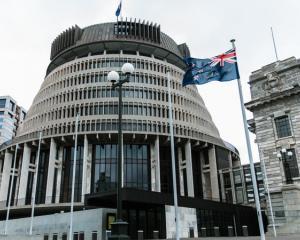
Invercargill's residents, though, have differed and have instead exhibited pride and resilience. This city on the outpost of civilisation still houses 50,000 people, still ensures most are employed, and still seems capable of delivering the quintessential and rapidly diminishing Kiwi dream of house, section, job and genuine community.
That pride and resilience looks set to change over the next few years into something more tangible - an inner-city reimagining being labelled ''Invercargill 2.0''.
The redevelopment, reported in Saturday's Otago Daily Times, will include a four and a-half star hotel, shopping mall, arts centre and more - hundreds of millions of dollars investment to thrust the city firmly into the future.
The risk with any investment is that adequate returns do not follow. The fact investors are willing to take that gamble on Invercargill suggests the city's outlook is far rosier than many New Zealanders might assume.
It is reasonable to ask where Invercargill's self-confidence is coming from. After all, isn't it windy, cold, too far from Auckland and devoid of overwhelming selling points for visitors?
Of course, Invercargill lacks big-city jobs - as does most of New Zealand. But on inspection it seems only two factors make it appear unpalatable as a regional centre - climate and location.
Climate seems to have ruled New Zealanders' settlement aspirations over the last half century. As the Western world shifted from the countryside to the cities, New Zealanders followed suit and in doing so, chose the warmest locales. Auckland, Tauranga, Nelson and Hawke's Bay are frequently touted as places to enjoy life in warm weather.
That made sense for a long time. Much of New Zealand's housing stock was built when the energy required for heating was cheap. But as that cheap energy dwindled, the old houses no longer made sense.
That's less an issue today. The South's housing stock is improving as the retrofitting of insulation, double glazing and other house-warming strategies become mainstream.
As the tyranny of low temperatures is eradicated, behaviours and expectations are changing.
At the same time, the tyranny of distance is disappearing. Our roads and cars are better, safer and more efficient than ever. Air travel is cheaper and faster than it was and the internet - especially the fibre network - has reduced the importance of proximity to major markets.
Meanwhile, Southland's fertile, productive, profitable hinterland continues to impress. Southland is one of the world's premier dairy farming areas and no amount of urban-focused political grandstanding will change that. It is also close to the international resort of Queenstown, while other well-known tourism attractions sit within its borders, including ''great walks'', fishing, hunting and surfing.
When compared with much of Europe, Southland's climate is normal - not cold. Compared to most of North America, Southland's winters are positively balmy.
And then there is that jewel off Southland's coast, Stewart Island/Rakiura, where kiwi run around during daylight hours and the bush still teems with birdsong. In a world of rapidly increasing incomes, mobility and urbanisation, it is not hard to imagine Stewart Island becoming something far more valuable to New Zealand's future economy than it has been for the last 100 years.
It seems Invercargill is right to feel confident. Times are changing and the city is ready to benefit. Far from accepting itself as nothing more than the butt of jokes, Invercargill knows its own worth and is willing to back itself. As with anywhere in the South, when one area prospers, we all benefit.











